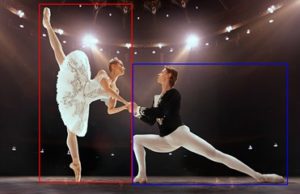
Technologies Improving the Video Conferencing Experience
The video conferencing experience has been improving more and more in recent months and years at a pace that is quite staggering. A key driver for change has come from two markets in particular: workplaces, and education. In both cases there is a desire for the people not in a physical room (conference room or classroom) to still enjoy a rich meeting or learning experience and not feel left out. Here are two specific technologies that have recently come to market, which enhance the video experience during video conference calls.
Zoom Room Smart Gallery Technology
  |
Key Features ♦ Provides individual video feeds of in-room participants in video conference calls ♦ Each in room participant is captured by the camera as a zoomed in close up of head and upper torso ♦ Removes the need for the camera shot to constantly jump from one person to another ♦ Everyone in the room can be viewed clearly by remote participants at the same time ♦ Provides a more up close engagement ♦ Removes the need for mechanical moving PTZ cameras in front of the room that can be distracting when it shifts between participants in the room |
Typical meeting and conference rooms equipped with video conferencing systems can host hybrid meetings with participants in the room while other attendees’ access remotely, either from home or another site. Great video quality as well as capturing every participant in the meeting room has always been paramount during video conference calls. The COVID-19 pandemic has forced majority of the workforce to switch to working from home. With this growth, there is a need to adapt and better support the need of remote participants.
Over the years, this audio visual technology has evolved to allow this with the use of Auto Framing and Auto speaker tracking but there has been some complaints with users saying that cameras auto framing people in the room can be a little nauseating to see especially if it is constantly moving. It can provide a jarring and unpleasant experience.
To keep up with the expectation of focusing on participants in the room, ZOOM have introduced ZOOM Room Smart Gallery. ZOOM has been working with their partners such as Microsoft, Logitech, NEAT and Poly to develop the Smart Gallery View.
ZOOM Room Smart Gallery view utilises artificial intelligence (AI) to analyse participants in the room and create individual video feeds of in-room participants. In room participants can move naturally and the camera angle will follow them creating a more natural feel. It also adapts to people entering and exiting the room automatically adding or removing participants in the gallery view. Audio will also be processed and the tile of the person speaking will be highlighted.
Zoom Room Smart Gallery is supported built in with appliances such as the NEAT Bar and Poly Studio X30. The Zoom Application for PC and Mac also allows this functionality with limits depending on the device’s processing power.
Information and Useful Links
Getting Started with Smart Gallery
Zoom Smart Gallery on Poly Devices
AI Camera Tracking Technology
 |
Key Features ♦ Automatic framing when multiple presenters are on stage ♦ Presenter is captured by the camera as a zoomed in close up of head and upper torso ♦ Seamless Pan and Tilt tracking of speakers during presentations and video conferences ♦ No need for presenters to wear trackers or run separate software to track presenters ♦ Manual control of cameras also available ♦ Technology is accessible for general consumers |
| Cameras are generally used in presentations such as lectures to either broadcast the presenter, magnify their image on the big screen or capture image for video conferencing or recording purposes. One of the main challenges when capturing presenters on stage is that they need to always be kept at the centre of attention to keep the session engaging.
This is achieved by tracking the speaker on stage using a pan tilt zoom camera. Previously, tracking was done by manually controlling the camera to capture the presenter. This worked well but is generally only viable during larger productions where a technician is available on site to operate the controls. This can also be prone to user error and lag behind when the operator is not paying attention. Technology has alleviated this issue by allowing automatic tracking with the use of dongles or trackers that presenters have to wear or carry. Although effective, this can become uncomfortable, restrictive, and sometimes become unreliable when the signal between the tracker and the system is disrupted. Knowing all these challenges, camera companies have developed presenter tracking based on artificial intelligence (AI). This has now greatly improved the experience during presentations and video conferencing applications. The original version of this technology used to be done by running a stand-alone PC application in conjunction with the camera itself. Today, to make life even simpler, companies such as Lumens and AVER have developed cameras with built in AI Human trackers. Doing this removes the need for traditional trackers and other PC based application to run the tracking. All the tracking is done within the camera itself. This new and improved experience has become even more accessible with companies producing consumer versions of cameras with AI tracking technology. Companies such as OBSBOT have even created AI powered webcams with the same tracking functionalities for low cost. These cameras can be used for personal presentations as well as video conferencing. |
|
| Useful Links and References |  |



